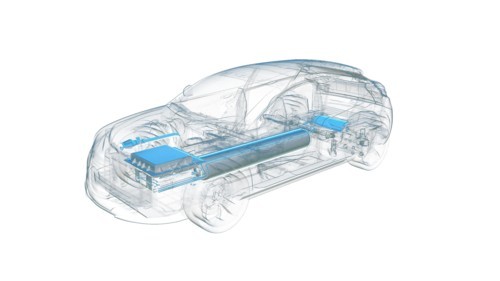Today, zero emissions mobility is synonymous with battery electric vehicles. But there are many situations where this solution is not adapted to our needs, for example, in long-distance driving where high autonomy and short recharging times are important factors. In the future, many different use cases will emerge adapted to personal mobility and business needs, the powertrain mix will evolve accordingly to meet these multiple scenarios.
The hydrogen-powered fuel cell is one of these alternative powertrain energies. Today, it has still not been widely commercialized, essentially due to the technology cost and infrastructure issues.
But given the gravity of the environmental issues and unresolved technical constraints, I believe we should work on this solution as a necessary complement to battery electric vehicles.
Stand-alone electrolysis stations, which can be financed by private investments, could provide an efficient infrastructure that can be rapidly deployed. In fact, Japan H2-Mobility, a joint venture made by leading Japanese carmakers, plans to build 80 hydrogen stations by March 2022. Early-adopter countries like Japan, Korea and Germany, or even regions like California, have committed to developing more than 1,000 hydrogen recharging stations over the next five years.
Hydrogen is the most efficient energy storage solution for “green” electricity – it can be a way to store the electricity created by renewable but intermittent sources such as solar or wind power for energy providers. For example, the hydrogen produced by 70m2 of solar panels can power 20,000 km on the road. It requires much less critical materials to produce a fuel cell compared with a battery and hydrogen is the most available element in the universe, with no recycling issues.
Fuel-cell technology offers an attractive and complementary alternative to battery technology. The range and refueling time of fuel-cell electric vehicles is equivalent to gasoline cars while being completely emissions-free. Trucks and commercial vehicles present a particularly promising use case and will accelerate the development of this technology. Companies like Pepsi and DHL are already using fuel-cell vehicles for their deliveries and I am sure it will become a new standard, particularly for last-mile deliveries in cities that are currently under pressure to reduce air pollution. By 2030, it is estimated that at least 2.0 million new vehicles and well over 350,000 trucks will be equipped with fuel-cell technology.

In this regard, Faurecia has decided to invest significant resources – some – €15 million in R&D per year – in optimizing the potential of this technology for the automotive sector. Over the past year, we’ve allied ourselves with research and technology specialists to help us fully overcome the different technical challenges and tailor high-performance systems on three critical components, which represent 80% of the total value: the tank with STELIA Aerospace Composites, the high-pressure valve system that manages the hydrogen supply with the French start-up Ad-Venta and the fuel-cell stack with the CEA (French Alternative Energies and Atomic Energies Commission). A great example of Faurecia’s open innovation approach at work, which provides us with a real competitive advantage.
Our overall goal at Faurecia is to halve the cost of the fuel-cell stack to make it a more attractive option for automakers to integrate into their electric vehicle range as this technology matures and refueling infrastructure develops. We believe that the interest of multiple stakeholders in fuel-cell technology will help drive our efforts to industrialize it as a clean and efficient way to power mobility.
In this regard, I am pleased to announce that Faurecia has recorded a recent success by signing a key contract with a major international OEM to co-develop a high-pressure hydrogen storage system for a large fleet of fuel-cell-powered light commercial vehicles, due on the road in early 2021.
Hydrogen will be key to the energy system of the future, since it is produced from a multitude of sources, and can therefore contribute to countries’ diversification of supply and the integration of renewable energy. In addition, it is a storable energy vector that produces no CO2 emissions.
For all the reasons I have mentioned, I strongly believe that fuel-cell technology will become a significant solution, especially in our powertrain mix, over the coming decade. Short-term technological improvements and cost breakthroughs will be necessary for its massive deployment in the automotive industry.
